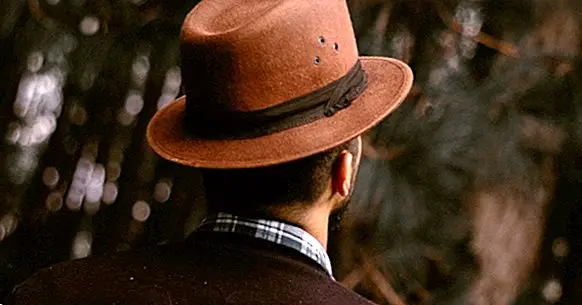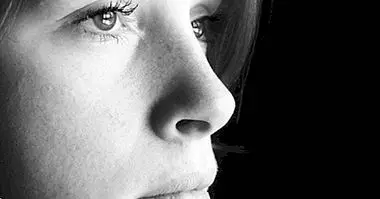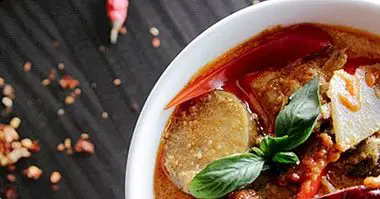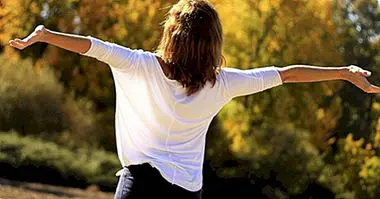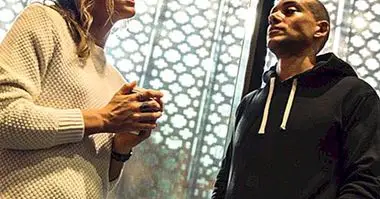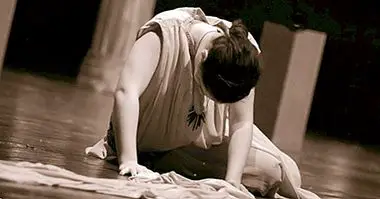What does the color brown mean in Psychology?
The color brown (brown color in Latin America) , is a color often associated with neutrality, or with unpleasant emotions. It is a chromatic stimulus very present in nature, so it also has ambivalent meanings, as well as many different uses.
We will see next what is the brown color, how it is known in different places and, In general, what does the color brown mean? attending to the feelings and feelings expressed.
- Maybe you're interested: "Psychology of color: meaning and curiosities of colors"
The brown color: what it is and how it is obtained
While these are stimuli that are part of our daily environment, colors have been very present in our cultural development. For the same reason they have an important participation in our psychological expressions: they manage to evoke different emotions and even perceptions about the objects that surround us, even without being aware of them.
Specifically, the brown color is obtained by mixing the three primary colors (generally using a little less blue and red, to avoid generating a grayish hue). In this sense It is considered a tertiary color . In addition, being a mixture of different shades is considered a non-spectral color, which is located visually at a wavelength that is between 580 and 620 nm.
The term "brown" is taken from the French "brown" which means "chestnut", so it is the name with which this color is known in many places in Europe. However, this color receives different names according to the geographical location.
In several places of Latin America it is known as "brown" color, although, when it comes to naming the hair tone, the term "chestnut" or "chestnut" is used. Another common way of naming this color, according to the specific tonality, is by the word "chocolate", "cinnamon", "mahogany" or "honey", among others. Its oldest name is "brown" color , and received it for being a color present in the fur of the leopard.
- Maybe you're interested: "Psychology of color: meaning and curiosities of colors"
What does the color brown mean?
In the studies on color psychology, the brown usually generates negative or neutral responses . For example, in the study by Clarke and Costall (2008) with university students in Germany, 44% of the participants reported that coffee has very few or even no emotional qualities. For their part, the participants who related this color to a particular emotion, added comments that describe the brown as "earthy" "mud" "natural" or phrases like "I do not have any feeling" and "I have nothing to say, it's just coffee".
In the same sense, Manav (2007) finds that coffee color it is related to insensibility and a discouraged mood, or to boredom . In the same way it is related to adversity and depression. In his study of color preferences, brown is found in the lowest scores.
For his part, the psychotherapist author of the Color Test, Max Lüscher (cited by Rivera, 2001), described through his studies the brown color as a sensory color and passively receptive. However, this color not only indicates neutrality and bitterness, but, like all colors, can have an ambivalent meaning , which in this case is related to vigor, strength, solidarity, dignity and confidentiality.
In another study conducted with Mexican students, Rivera (2001) finds that the main descriptors of women on the color brown are "serious" "sad" "branch" "dark" bears, and in the case of men the main ones Descriptors are "coffee" "tobacco" "excrement" "life". The common descriptors that the participants had are "earth", "trunks", "wood", "tree", "trunk", "chocolate", "seriousness", "brick", "ugly", "beautiful".
In this sense the same researcher concludes that the brown color is one of the colors that evoke objects and / or nouns (other of these are dark blue, green and yellow). Coffee also evokes qualifying adjectives (as well as pink, gray and orange), unlike other colors that evoke emotions, such as white, red, light blue and even black.
Cultural meanings
On the other hand, Eva Heller (2005) suggests that the combination of brown color with other colors can generate opposite effects both at a psychological and cultural level.For this author, on a psychological level, the brown it is related to the unfriendly, the antierotic, the unpleasant, the vulgarity and the foolishness .
Its accompaniment with the color blue can evoke at the same time a spiritual and earthly symbolism, whose translation can be of nobility and impunity. The opposite combination (brown-white) can evoke dirt-cleaning at the same time. And its mixture with the black color is a sign of evil.
At the cultural level, their meanings have been similar, It is related to the color of autumn and the withered , which is in turn the end of spring, season more related to happy emotions. In the same sense it usually represents the antiquated and what is extinguished, or also that which gives appearance of maturity and being a classic. For the same reason, it is a color that has been very present in aesthetics and the most recent modern clothing. Despite this, according to Heller (2005) the brown color is usually rejected as age advances, and is in fact the most rejected color of all.
Main uses
Everyday the brown color has been very present in the decoration, since it is the raw material of several pieces of furniture. Not only that, but It is very present in nature . In this same sense is a color that has been very present in cave paintings.
Brown, as well as black and red, are often used to generate dramatic effects in advertising and cinematography, and can also be used strategically to make a place feel more welcoming. Especially when these colors do not mix with each other.
At a political level, brown is usually used on local or provincial flags, although at some point it was associated with Nazism, as it was used by the assault troops. During the Middle Ages it was related to servitude, by the color of the clothes when it was little dyed . For the same reason it has traditionally been understood as an antagonist of elegance.
Bibliographic references:
- Clarke, T. and Costall, A. (2008). The Emotional Connotations of Color: A Qualitative Investigation. Color Research and application, 33 (5): 406-410.
- Heller, E. (2004). Color psychology. How colors act on feelings and reason. Editorial Gustavo Gili: Spain.
- Llorente, C. (2018). Comparative analysis of the chromatic symbology in advertising. Nike in China and Spain. Vivat Academica. Journal of Communication, 142: 51-78.
- Manav, B. (2007). Color-Emotion Associations and Color Preferences: A Case Study for Residences. Color Research and Application, 32 (2): 145-151.
- Parodi Gastañeta, F. (2002). The chromosemiotic. The meaning of color in visual communication. Retrieved September 17, 2018. Available in //200.62.146.19/bibvirtualdata/publicaciones/comunicacion/n3_2002/a07.pdf.
- Rivera, M. A. (2001). Perception and meaning of color in different social groups. Image Magazine, 53: 74-83.

